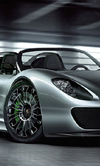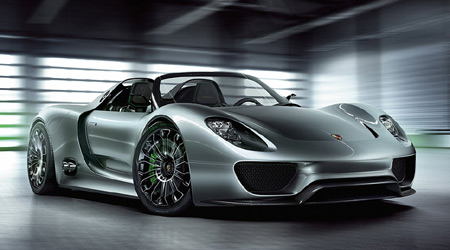Porsche hybrid
 During 2010, Porsche achieved another significant first when it won an important motor race using a hybrid vehicle that stored its energy mechanically. When Formula One embraced KERS technology in 2009, the teams which raced these systems did so successfully using chemical storage of energy in the form of batteries.
During 2010, Porsche achieved another significant first when it won an important motor race using a hybrid vehicle that stored its energy mechanically. When Formula One embraced KERS technology in 2009, the teams which raced these systems did so successfully using chemical storage of energy in the form of batteries.
Williams had developed, but didn't race, its flywheel/electric system. Flybrid's pure mechanical system promises excellent efficiency, low mass and good durability, but nobody in Formula One raced its system, choosing instead to develop systems in-house, many of which never made it past initial testing and fewer still that were raced with any degree of success. Having abandoned KERS this year, Formula One is set to reintroduce the technology from 2011.
The system developed by Porsche for use in sportscar racing, and used during 2010 in a small number of races on a 911 GT3 car, is similar in principle to the flywheel/electric system developed by Williams. The kinetic energy recovered from the deceleration of the vehicle is stored in the form of rotational kinetic energy in a flywheel.
Energy is added to the flywheel or taken from it by using it as an electric motor, and hence it must contain elements that enable it to act as the rotor from an electric motor. We assume that, for reasons of efficiency, it works as a permanent-magnet machine and so the flywheel is likely to contain magnets or at least be heavily doped with magnetic materials. The rate of discharge, which is the performance boost that the vehicle feels, is of the order of 120 kW (160 hp).
The Porsche system feeds the recovered energy to the front wheels of the car using two electric motors, which means full power can be added even in situations when the rear wheels are traction limited, thus providing a useful advantage. While the extra mass of the system (estimated at about 150 kg for the Porsche system) will clearly be a penalty, there is likely to be an advantage from the extra torque available at the front wheels., and this will become more pronounced as the technology improves and matures. The power and energy densities of the system will increase as the system evolves, giving a greater advantage to a car equipped with such a system.
In respect of using two motors, the system is similar to that used by Porsche on its prototype 918 Spyder roadcar. Given that Porsche had a free hand with the design of the 918, it shouldn't surprise us that it has chosen a similar method of power delivery for the 911 hybrid.

Beyond simply adding the extra energy in equal amounts to the front wheels, it is clear that the power can be added in an uneven manner, thereby tuning the steering response of the car. Additionally, if energy is recovered at the front wheels, the braking behaviour of the car can be tuned in corners to help the car turn, as with ESP systems on roadcars.
The disadvantage of adding the extra energy at the front wheels is that the system cannot take advantage of the range of gears available in the transmission, as is the case with hybrids that add their energy to the drive before the gearbox.
At the time of writing, the Porsche 911 GT3 hybrid was competing in the prestigious Petit Le Mans 10-hour race in the US, the final round of the American Le Mans Series, in the GTH class. This class has been created especially for such cars, and a measure of the car's potential is that it has, throughout practice, been halfway up the GT2 class times. We should note, however, the class of the drivers used. Timo Bernhard, Mike Rockenfeller and Romain Dumas, who are driving the Porsche hybrid, won the 24 Hours of Le Mans outright for Audi in June this year.
Fig. 1 - The prototype Porsche 918 hybrid roadcar uses two motors to supply recovered energy to the front wheels, as per the Porsche 911 GT3 hybrid racecar
Written by Wayne Ward